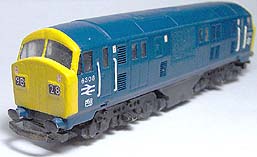You learn as you go along, each kit sees a new approach, technique or style being tried out somewhere in the construction. If the end result is any good, it gets repeated on the next one, where another new thing is tried out, which if it proves to be any good.....
So an evolutionary process therefore, and looking at it critically now 3 years on, the Baby Warship will have to have a refit at some stage in the future...




